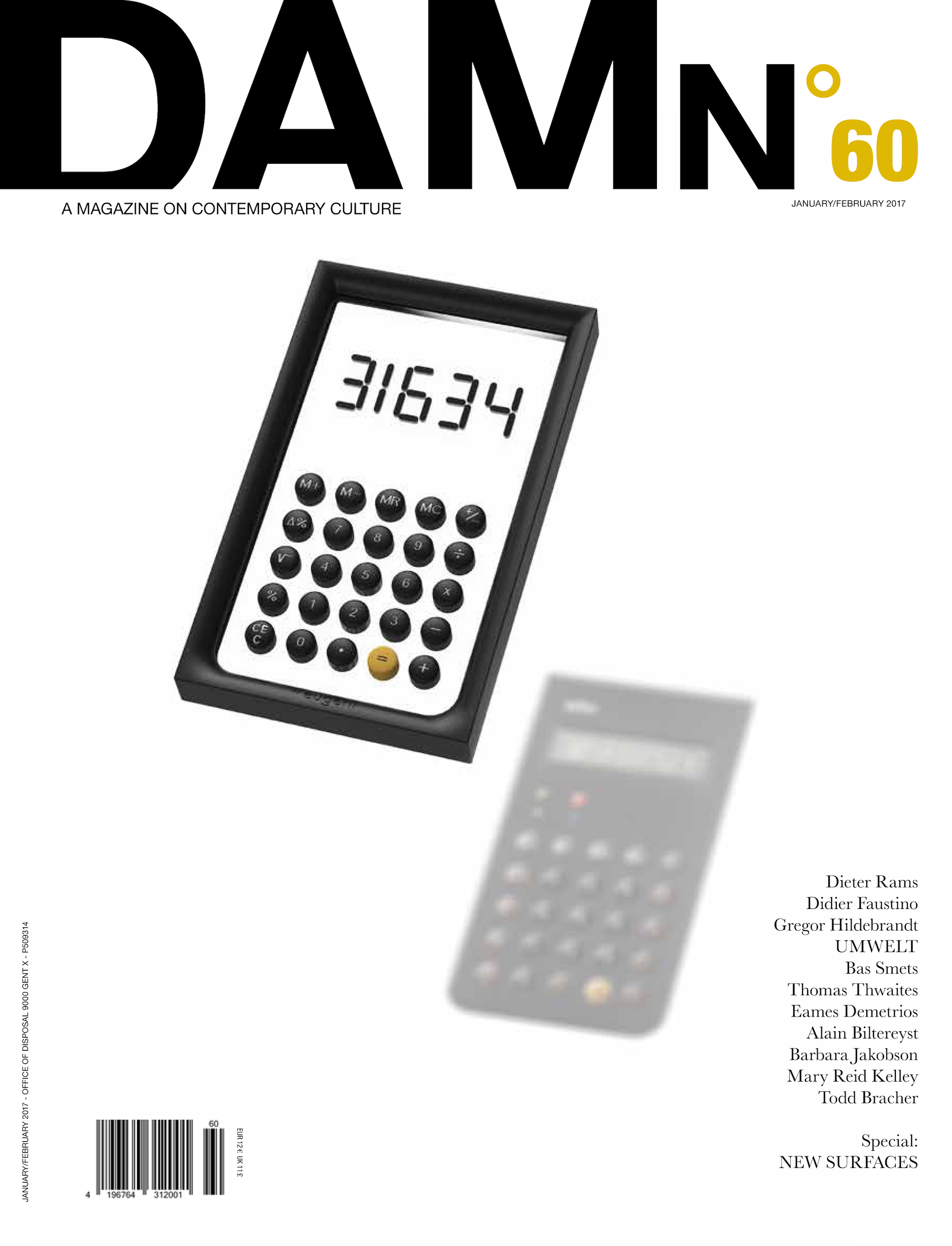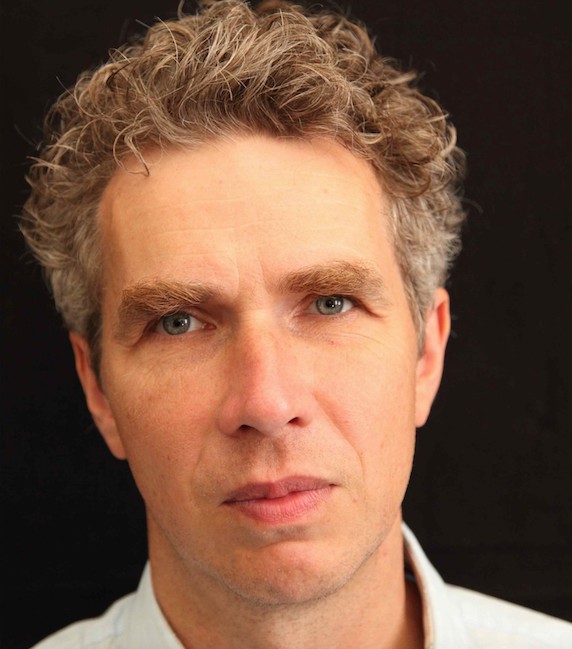Close to the sea and the dunes, in Voorlinden Park in South Holland, is a remarkable new museum. Joop van Caldenborgh, a businessman now in his 70s who made his fortune in the chemical industry and has been collecting art for 50 years, initiated the project. The one-storey building, designed by Kraaijvanger Architects, is the exact size of a football pitch and of a Greek temple. Approaching the museum across the lawn, one can already see part of the collection through the glazed façades. Once inside, an abundance of space and light surrounds you.
What distinguishes Museum Voorlinden from other institutes displaying private collections to the public is that it is not just presenting pieces from the collection – one-third of the space is reserved for temporary exhibitions. The opening show has brought together 80 works by American Abstract painter Elsworth Kelly. Kelly was involved in the early preparations but unfortunately could not see the result, as he died in December 2015.
Blue Ripe (1959) was purchased by van Caldenborgh decades ago. This is one of his favourites – it usually hangs in his bedroom, informs artistic director Suzanne Swarts. The painting is characteristic in its simplicity, showing a huge coloured form against a white background. In some of Kelly’s later works, he skipped the painted background and cut the canvas where the colour ends. “I am not interested in paintings hanging on the walls of houses as pictures. To hell with pictures – the paintings should be the wall...” he said. The show has some great moments, like when you see Red Curve II (1972) through a doorway, like a distant horizon, or experience the irregular rhythm of Blue Black Red Green (2000) in the last room. “I want my paintings to be voluptuous, to a certain point”, said Kelly. Since 1970 he had been living in rural Spencertown in upstate New York. His abstract forms are partly derived from observing nature, but also urban life, or from looking at the pattern of painted lines on airport runaways. As with a lot of Abstract art, one can ascertain some sort of figuration underneath.
Apart from the Kelly exhibit, the museum opened with a presentation from its own collection, curated by Swarts, called Full Moon. The title refers to a painting by Dutch artist Jan Sluijters. In the same room, an installation of glossy rectangular panels by Esther Tielemans creates what Swarts considers an ‘abstract landscape’. A slight preference for Abstract art runs through the collection, although conceptual, witty works also seem to have attracted Van Caldenborgh, such as Hans Peter Feldmann’s basket of eggs balancing on a chair, and a three-legged table by Ai Weiwei. Among the highlights are works by Olaf Holzafpel, Mark Manders, and a series of six paintings by Michaël Borremans, each with a portrait of the same woman with her hand hovering over an egg. As Swarts explains, “Those were originally studies for a commission from Queen Paola, but Borremans decided to do a different piece. Later, when he saw the works again, he was happy with them. We were lucky to visit him at around that time. It’s quite rare to be able to acquire a series of studies by a living artist. It gives us an insight into how he works.”
Richard Serra’s monumental sculpture Open Ended (2007-08) has found a place in the third section of the museum that houses permanent works, and is integrated into the architecture. The piece consists of six bent plates of steel, 18 metres long, positioned in such a way that the visitor experiences a narrow, zigzag corridor surrounded by four-metre-high steel walls. While Serra’s piece is the ultimate grand gesture and unique in the collection, a miniscule work by Maurizio Cattelan can easily be overlooked. Two lift entrances 30 centimetres high are built at the base of a wall, suggesting access to imaginary additional storeys in the building. And in the same area, Swimming Pool (2016) by Leandro Erlich looks as though it’s ready to dive into. But it turns out that the depth of the pool is an illusion, as one can see other visitors, fully clothed, moving about under the surface of the water, indicating that there must be a subterranean entrance to this pool.
The museum building somewhat echoes Fondation Beyeler in Basel, where art and landscape merge in a similar way. You can sit down on benches in a long hallway and just enjoy the spectacle of light, sky, trees, and animals outside. “We travelled all over the world to observe the appealing aspects of other museums, as well as the things we thought did not work. We came to the conclusion that spaces 8 metres wide by 5.26 metres high were good for us”, Swart reports. Along with Beyeler, the Louisiana Museum in Denmark, the Menil Collection in Houston, and the Kimball Art Museum in Fort Worth were references. “The fact that we opened with Kelly also stresses the importance of artists whose works relate to architecture”, says Swarts. Thoughts about the ideal museum did not stop at the architecture, however. The guards at the Voorlinden, who keep an eye on the artworks, are mostly art students or young artists who are pleased to interact with visitors. “We call them guides and guards. We did not want the type of staff member who looks at his watch to see if his shift is nearly over or who cannot answer any of the visitors’ questions.”
Current temporary exhibitions at Museum Voorlinden: Ellsworth Kelly: ANTHOLOGY, until 08 January 2017. Martin Creed: SAY CHEESE!, 21 January – 07 May 2017.
What distinguishes Museum Voorlinden from other institutes displaying private collections to the public is that it is not just presenting pieces from the collection – one-third of the space is reserved for temporary exhibitions. The opening show has brought together 80 works by American Abstract painter Elsworth Kelly. Kelly was involved in the early preparations but unfortunately could not see the result, as he died in December 2015.
Blue Ripe (1959) was purchased by van Caldenborgh decades ago. This is one of his favourites – it usually hangs in his bedroom, informs artistic director Suzanne Swarts. The painting is characteristic in its simplicity, showing a huge coloured form against a white background. In some of Kelly’s later works, he skipped the painted background and cut the canvas where the colour ends. “I am not interested in paintings hanging on the walls of houses as pictures. To hell with pictures – the paintings should be the wall...” he said. The show has some great moments, like when you see Red Curve II (1972) through a doorway, like a distant horizon, or experience the irregular rhythm of Blue Black Red Green (2000) in the last room. “I want my paintings to be voluptuous, to a certain point”, said Kelly. Since 1970 he had been living in rural Spencertown in upstate New York. His abstract forms are partly derived from observing nature, but also urban life, or from looking at the pattern of painted lines on airport runaways. As with a lot of Abstract art, one can ascertain some sort of figuration underneath.
Apart from the Kelly exhibit, the museum opened with a presentation from its own collection, curated by Swarts, called Full Moon. The title refers to a painting by Dutch artist Jan Sluijters. In the same room, an installation of glossy rectangular panels by Esther Tielemans creates what Swarts considers an ‘abstract landscape’. A slight preference for Abstract art runs through the collection, although conceptual, witty works also seem to have attracted Van Caldenborgh, such as Hans Peter Feldmann’s basket of eggs balancing on a chair, and a three-legged table by Ai Weiwei. Among the highlights are works by Olaf Holzafpel, Mark Manders, and a series of six paintings by Michaël Borremans, each with a portrait of the same woman with her hand hovering over an egg. As Swarts explains, “Those were originally studies for a commission from Queen Paola, but Borremans decided to do a different piece. Later, when he saw the works again, he was happy with them. We were lucky to visit him at around that time. It’s quite rare to be able to acquire a series of studies by a living artist. It gives us an insight into how he works.”
Richard Serra’s monumental sculpture Open Ended (2007-08) has found a place in the third section of the museum that houses permanent works, and is integrated into the architecture. The piece consists of six bent plates of steel, 18 metres long, positioned in such a way that the visitor experiences a narrow, zigzag corridor surrounded by four-metre-high steel walls. While Serra’s piece is the ultimate grand gesture and unique in the collection, a miniscule work by Maurizio Cattelan can easily be overlooked. Two lift entrances 30 centimetres high are built at the base of a wall, suggesting access to imaginary additional storeys in the building. And in the same area, Swimming Pool (2016) by Leandro Erlich looks as though it’s ready to dive into. But it turns out that the depth of the pool is an illusion, as one can see other visitors, fully clothed, moving about under the surface of the water, indicating that there must be a subterranean entrance to this pool.
The museum building somewhat echoes Fondation Beyeler in Basel, where art and landscape merge in a similar way. You can sit down on benches in a long hallway and just enjoy the spectacle of light, sky, trees, and animals outside. “We travelled all over the world to observe the appealing aspects of other museums, as well as the things we thought did not work. We came to the conclusion that spaces 8 metres wide by 5.26 metres high were good for us”, Swart reports. Along with Beyeler, the Louisiana Museum in Denmark, the Menil Collection in Houston, and the Kimball Art Museum in Fort Worth were references. “The fact that we opened with Kelly also stresses the importance of artists whose works relate to architecture”, says Swarts. Thoughts about the ideal museum did not stop at the architecture, however. The guards at the Voorlinden, who keep an eye on the artworks, are mostly art students or young artists who are pleased to interact with visitors. “We call them guides and guards. We did not want the type of staff member who looks at his watch to see if his shift is nearly over or who cannot answer any of the visitors’ questions.”


